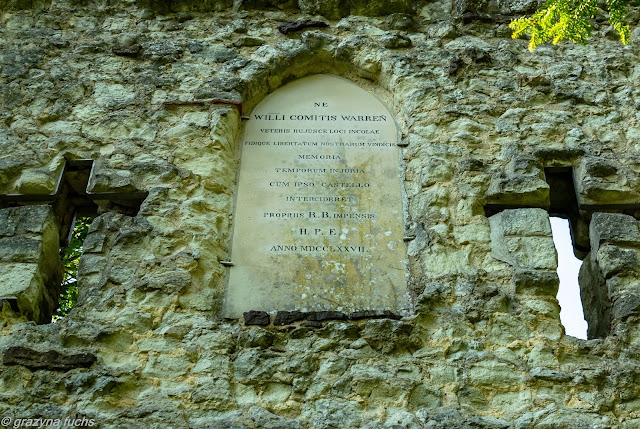Reigate Castle was probably constructed soon after 1088 when William de
Warenne was created Earl of Surrey and received a grant of Reigate from
the King. It was strongly fortified by the Earl of Arundel in the late
14th century. However, by 1441 the houses within the castle were
ruinous. It was briefly occupied by both sides during the Civil War but a
Parliamentary Order of 1648 requiring it to be made indefensible, no
doubt completed the ruin. The mock antique gateway was erected in 1777.
Reigate Castle occupies a natural sand-hill, which has been artificially
scarped, forming a plateau. At the foot of the scarp is a ditch, of
varying widths. The crest of the scarp had a stone wall round it at one
period. This formed the inner ward of the castle. The entrance was to
the east, by the causeway, perhaps once broken by a drawbridge, across
the ditch. Outside the north-western part of the ditch, up the hill, was
an extensive outwork. From this outwork or barbican a wet ditch ran
eastwards and then southwards in a curve. From the northern outwork or
barbican a wall was carried round the west and south sides of the castle
on the outside of the dry fosse round the inner ward, making a narrow
outer ward here also. The caverns are under the western part of the
inner enclosure. There is an entrance from the middle of the castle, and
another, perhaps more recent, from the western ditch. The caverns were
in all probability dry cellars and storehouses to begin with and
enlarged later on. No structural remains exist of the original castle
buildings. Some old stonework is visible in garden walls to the south of
the castle but there is no indication that it is in situ. On the north
side of the castle site are the remains of a moat now cemented into an
ornamental sheet of water.
[http://www.gatehouse-gazetteer.info/English%20sites/3461.html]











No comments:
Post a Comment